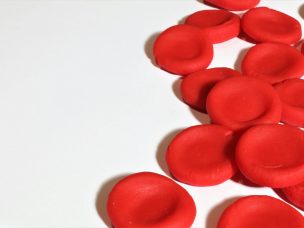Gain-of-function mutations in the PIEZO1 mechanosensor channel affect intracellular calcium concentration, affecting late-stage differentiation and disrupting apoptosis, hypoxia response, and glycolysis, according to a new study.
PIEZO1 is an important mechanosensitive cation channel that detects mechanical forces and is involved in many physiological functions. Its function in erythrocytes is to control hydration and cellular volume. Gain-of-function (GoF) mutations in PIEZO1 cause slowing of the channel’s inactivation kinetics, which leads to dehydrated hereditary stomatocytosis (DHS). Hemolytic anemia (ranging from mild to severe), iron overload, and other symptoms are common in DHS patients.
The main objective of this research was to find druggable targets by studying PIEZO1’s function during stressful erythropoiesis in DHS. This study was presented as a poster at the 65th American Society of Hematology Annual Meeting and Exposition.
Baseline Characteristics
Eighty DHS patients were examined, and measurements were made of their erythropoietin (EPO), erythroferrone (ERFE), and BMRI (reticulocyte count × patient’s Hb/normal Hb). The results showed mutation-dependent dyserythropoietic characteristics comparable to those seen in patients with congenital dyserythropoietic anemia type II (CDAII). Human umbilical cord-derived progenitor erythroid 2 (Hudep2)-PIEZO1-KI (Hudep2-KI), an engineered erythroid model of DHS, was compared to Hudep2-WT after undergoing a 12-day erythroid differentiation process.
Significant Reduction in the Proliferation Rate of HUDEP2-KI
There was a considerable reduction in CD235a expression on the last day of differentiation, which suggests that PIEZO1-mediated modification happens near the end of differentiation. A morphological study of differentiating cells showed that, starting on day 7, KI cells had a much reduced proliferation rate (1.5-fold increase vs. day 0) than wild-type Hudep2 (Hudep2-WT) (3.1-fold increase vs. day 0).
Changes in the Relevant Cell Count After Differentiation
On the 12th day of differentiation, the number of KI cells was half that of WT cells, and the proportion of orthochromatic normoblasts was much lower (13.7% vs. 54.5% in WT). A reticulocyte increase was also observed concurrently (Hudep2-WT: 45.5% vs. Hudep2-KI: 86.3%). At different stages of differentiation, RNAseq was carried out to determine which altered signaling pathways were responsible for the deregulation of differentiation.
Apoptosis-Related Activities and Activation of Proapoptotic Signaling
The gene ontology investigation showed that apoptosis, hypoxia response, and glycolysis were the most enriched biological processes. On different days, various apoptosis-related activities were significantly enriched during differentiation. A single-gene analysis revealed an imbalance in pro- and anti-apoptotic signals. In Hudep2-KI cells, 70.8% of proapoptotic genes were upregulated relative to WT cells. Apoptosis regulation did not affect anti-apoptotic signals, 57.9% of which were upregulated and 42.1% downregulated. The researchers hypothesized that PIEZO1 GoF activates proapoptotic signaling to trigger apoptosis.
Source:
Andolfo, I. (2023, December 10). Unraveling the role of PIEZO1 in stressed erythropoiesis: implications for dyserythropoiesis and potential therapeutic targets in dehydrated hereditary stomatocytosis. https://ash.confex.com/ash/2023/webprogram/Paper180833.html










